 Craig Linton, blogger at Fundraising Detective, is hosting the July Nonprofit Blog Carnival. In his call for submissions earlier this month, he asked his fellow non-profit bloggers to “Share your posts on welcoming donors and reducing attrition.”
Craig Linton, blogger at Fundraising Detective, is hosting the July Nonprofit Blog Carnival. In his call for submissions earlier this month, he asked his fellow non-profit bloggers to “Share your posts on welcoming donors and reducing attrition.”
It was this simple request that inspired me to write the following email yesterday and send it to 25 of my non-profit friends across the country.
Erik’s email request to share thoughts and experiences
To: Erik’s NFP friends
From: Erik Anderson
Date: July 23, 2014
Re: A small favor: 30 seconds of your time?
Dear non-profit friend:
I am writing a blog tomorrow (Thursday) morning and I need a quick favor from you. Would you please click reply to this mail and take 30 seconds to write between two and five sentences answering the following question:What do you do to welcome donors to your cause and surprise and delight them?
I will incorporate your response into tomorrow morning’s DonorDreams blog post without attributing the response to you or your agency. This way you don’t need to worry about people calling you or supporters seeing your actions as anything less than nice and genuine.
I know you’re busy and appreciate you taking a 30 second break from work to help me out.
Sincerely,
Erik Anderson
Founder & President, The Healthy Non-Profit LLC
The responses kept coming in!
To be honest, I know how busy my non-profit friends and clients are. I have worked on the front line of a number of non-profit organizations, and I’ve experienced the hurricane that beats every agency’s beach on a daily basis.
So, when 14 people responded to my email request, I was pleasantly surprised at first and then I was humbled that they took time out of their chaotic day to share their thoughts or experiences.
Thank you to those who responded to my call to action. I appreciate you. I appreciate what you do. I loved your submissions.
Warning to readers: There was a lot of content submitted yesterday, and I am sharing it ALL with you. As a result, this post will be a little long today, but I promise that you will find pearls of wisdom embedded in your colleagues comments. In an effort to bring some structure to everyone’s experiences, I’ve divided people’s suggestions into categories. As you saw in my original email, I promised people anonymity unless they decided to share their identity in their response. Enjoy!
 Acknowledgement letters, emails, phone calls and gifts
Acknowledgement letters, emails, phone calls and gifts
- “I will share what I have – but I cannot really help much here. Things I have done in the past, but unfortunately have not been particularly consistent: 1) Asked the board to make phone calls thanking first time donors; 2) Sent thank you notes saying that we know that this is a first donation for them; and 3) For a large first time donor, we have taken a small, kid made gift.“
- “For first time donors of any size, we send a handwritten “Thank You” note signed by our kids. For amounts from $1,000 to $5,000 donors also receive a call from one of our members, letting them know what their donation means to them personally. Anything over $5,000 the donor receives both of the above as well as an original piece of artwork made by one of our kids and hand delivered to the donor. All donors are recognized at our annual event. This has really made a difference in donor retention. They love talking with the kids.”
- “To show special appreciation in certain circumstances: 1) we send donors thank you letters that have been written or made by our youth; 2) send thank you letters with pictures of clients during an activity; 3) ask board members to make a personal thank you call; 4) send a birthday email; 5) send hand written thank you notes; 6) send a logo pin or other small gift; and 7) send a paper or email newsletter 3-4 times a year. Sorry it isn’t in sentence form…I am going on vacation and have four deadlines to finish.”
- “I always send a little note to thank them for their gift, and I use a handmade card because I love to scrapbook. While I often get comments on the beautiful cards, my favorite surprise is having the older Club members make turtles. This is an easy gift to do with just a microwave (pretzel, Rollo and a pecan). We put a few of the candies in a cellophane bag, tie with a ribbon, and attach a little poem of thanks telling them this was a handmade gift of thanks. The kids then deliver them if they can, or I do. This seems to thrill our donors.”
Treating donors like you would treat your BFF
- “In regards to surprising and delighting donors, I think I have found the best way is to treat them as people. In doing so, you welcome learning about them — their hopes and dreams and thoughts. You can learn so much about their families and what makes them personally tick. This can all be done with a phone call, a special note, or their favorite things (e.g. coffee or candy). In doing so we hope they feel what we all want to feel — special, noticed and appreciated.”
- “We make their experience more personal. We introduce them to our kids and let them get to know them. We help them understand that we are interested in them, and not just their financial support.”
Demonstrating impact
- “We welcome them personally and in writing and place a huge emphasis on stewardship; reporting that their generous contribution is being used in the way they intended and assuring them through both statistical and anecdotal means that their contribution is making a significant impact. I know that all sounds pretty standard but it’s what we do.”
 Inviting donors to take a tour
Inviting donors to take a tour
- “The best way to welcome donors to the Boys & Girls Clubs of Columbus is to invite them to tour the Club. Donors are always so surprised when kids from the Club approach them and introduce themselves in a professional way. It is a key behavior that our staff drill into kids and one that really sets our program apart. In addition to being a great skill for kids to learn, donors don’t usually expect to come into the neighborhoods we serve and see such impeccable manners and poise. This experience has engaged many of our donors but also prepared many Club kids to perform well in job and college interviews.”
-
“I believe it is important to listen to our donors and find out first what their passions are and then tailor our approach to meet them. When we meet with a potential donor, we like to start with a tour of the facility and provide information about our community needs and the services provided that address those needs. Usually delight comes when we listen to what drives our donors, and find a way to partner their passions with our mission.”
- “We try to welcome donors to our cause by getting them to come into the Club for a tour while the kids are here. This way they get to see exactly what positive impact we make with the youth in our community as well as what positive impact their donations are making. A little (and easy) surprise for our donors comes in the form of a hand drawn and written thank you card from our youth members that is placed in their “official” administrative thank you letter sent out after we receive their donation. It is such an easy thing to have our kids do and not only teaches them about appreciation and what others do for them but also sends a heartwarming thank you to our new and repeat donors. How could donors not be committed to our cause after seeing what we do in action and getting a personalized card from one of the kids as well?!“
Pictures and stories
- “One of the first stewardship activities we do is to make them feel that they are a part of what we do here, a part of our Boys & Girls Club family. Sending updates about the individual progress and successes of our kids made possible by donors is a great way to do that. It is similar to receiving an invitation to a recital or a graduation announcement from loved ones. Those pictures and stories are shared so donors can celebrate significant life successes together with them. It makes them feel more a part of their lives. This same thing occurs when we bring in new donors by sharing specific success stories about our kids. Because in reality, those donors ARE a part of each child’s life at the Club.”
- “We welcome new donors by sharing stories of impact – stories of real kids from our community who have real challenges and then how the Boys & Girls Club works hard to improve their lives. We share these stories through targeted mailings, events we hold, through our Board of Directors’ relationships, through our Social Media efforts, etc. Then we surprise our donors by thanking them as often as we can – first with a letter after their donation, then with a personal phone call, through a holiday card, and then through our annual “Thank-a-thon Night” in which our Board Members call every donor to simply share our gratitude and finally, for those donors who make a gift of $500 or more we invite them to a special “Donor Night” held at one of our Board Member’s homes in which we treat them to food, drinks, and fun – and the funny thing is, we tell them more stories of real kids and what we do to help these kids while we have their attention and in person. It’s a constant and intentional pipeline of stories, impact, appreciation, recognition, donation, stories, impact, appreciation, etc.”
 Send chocolate covered strawberries
Send chocolate covered strawberries
I should’ve included this response under the first category, but it was so unique that I had to break it out and highlight it. At first, I was skeptical and thought my friend was pulling my leg. So, here is how the email thread went:
- Non-profit CEO: “I delight them with a dozen chocolate covered strawberries delivered to their house as a surprise.“
- My response email: “I am sensing sarcasm and won’t publish that. If you do indeed do this (and where is that money coming from), then let me know and I’ll include it in tomorrow’s post. I’m looking forward to our lunch in a few weeks.”
- CEO’s email response: “No, I am serious! My four biggest donors LOVED the unexpected chocolate strawberries. When they call to thank me, it gives me another chance to discuss the Club and their donation(s). I generally give out 10 to 15 per year. Trust me . . . IT WORKS!!!“
Well, that was embarrassing. I apologized to this friend for ever doubting his resource development genius. 🙂
Invite donors to participate, get them involved behind the scenes, and recognition
- “1) We invite our donors to participate in behind the scenes engagement opportunities (conductor searches, rehearsals, sitting on stage with orchestra during a dress rehearsal, radio interviews, Fall Camp activities). 2) Send selected performance and Honors Groups CD’s to donors. 3) Provide invitations to hospitality events (concert receptions, lunches or dinners with staff, Board member, and artistic staff, meet & greets with guest artists and guest conductors) and complimentary tickets to ensemble performances. 4) Invitations for complimentary tickets to Chamber Music Institutes Concerts and Honor Groups performances. 5) Instituted a Servant Leadership award given each year to a volunteer or donor.”
- “Working with volunteer groups that come through our agency, I recognize that they are giving of their time. In our post-project “debrief,” we thank them for their work and give them stats on their impact. We also share additional ways they can get involved. It could be other ways to volunteer or a special project. We provide them with our most recent appeal that offers stats and a call to action. We share other ways (beyond time) how they can impact the mission. Now this is planting a seed, while not discounting the two hours they just “sweat-it-out-for-good.”
This has been the longest blog post that I’ve ever published at DonorDreams. Again, thank you to everyone who weighed-in with what is working on the front line of their agencies when it comes to stewardship activities. Based on this response, there must be lots of surprised and delighted donors out there.
Did I forget to send you and email? Is there something that your agency is doing to steward donors and is having a positive impact on reducing your donor turnover rate? If so, please scroll down and share your thoughts and experiences in the comment box below. Why? Because we can all learn from each other.
Erik Anderson
Founder & President, The Healthy Non-Profit LLC
www.thehealthynonprofit.com
erik@thehealthynonprofit.com
http://twitter.com/#!/eanderson847
http://www.facebook.com/eanderson847
http://www.linkedin.com/in/erikanderson847

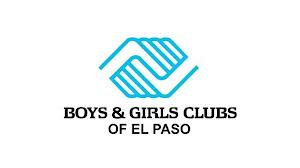
 “It all ties together,” explains Jaime. “The big challenge is creating a culture that appreciates and strives to create loyalty.”
“It all ties together,” explains Jaime. “The big challenge is creating a culture that appreciates and strives to create loyalty.”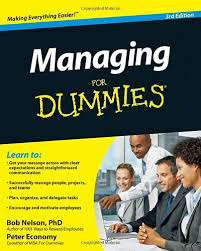
 Here is how that new top ten list turned out for
Here is how that new top ten list turned out for 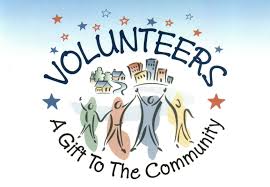 Yesterday, I attended my first
Yesterday, I attended my first 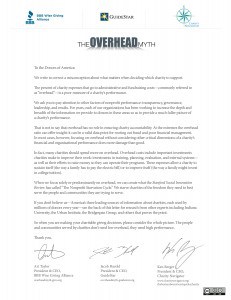
 As they say, the proof is in the pudding which is what inspired today’s blog post. The pudding, of course, is an article that washed into my email inbox from LinkedIn on November 30, 2013. The author was John Wasik and the article was titled “
As they say, the proof is in the pudding which is what inspired today’s blog post. The pudding, of course, is an article that washed into my email inbox from LinkedIn on November 30, 2013. The author was John Wasik and the article was titled “ I am a member of Gen-X, and I behave like a typical person of that generation especially when it comes to my mailbox. I hate going to the mailbox. I hate opening mail because 99.9% of it is junk. Anything important comes to me via email, and all of my bills and charitable giving is set-up using automatic bill pay. So, imagine my surprise the other day when I was opening a three-week stack of mail, and I came across a handwritten envelope from one of my favorite local charities.
I am a member of Gen-X, and I behave like a typical person of that generation especially when it comes to my mailbox. I hate going to the mailbox. I hate opening mail because 99.9% of it is junk. Anything important comes to me via email, and all of my bills and charitable giving is set-up using automatic bill pay. So, imagine my surprise the other day when I was opening a three-week stack of mail, and I came across a handwritten envelope from one of my favorite local charities.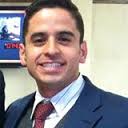 It happens every year. My partner and I get a phone call from Cindy, who is Ernie Gamino’s assistant, and she asks us to please schedule a year-end sit down meeting. Ernie is our Edward Jones financial advisor, and getting time in both of our calendars is a challenge. However, we found some time this past Saturday. I’m glad we did because I discovered that Ernie is a really good fundraising professional, who has never been trained as one or worked at a non-profit organization. We can all learn a lot from Ernie and his colleagues.
It happens every year. My partner and I get a phone call from Cindy, who is Ernie Gamino’s assistant, and she asks us to please schedule a year-end sit down meeting. Ernie is our Edward Jones financial advisor, and getting time in both of our calendars is a challenge. However, we found some time this past Saturday. I’m glad we did because I discovered that Ernie is a really good fundraising professional, who has never been trained as one or worked at a non-profit organization. We can all learn a lot from Ernie and his colleagues. I started the meeting off by growling at poor Ernie. I wanted to know why this annual meeting is necessary? Can’t he just go about doing his job and call me when he needs to get permission to do something with my investment portfolio.
I started the meeting off by growling at poor Ernie. I wanted to know why this annual meeting is necessary? Can’t he just go about doing his job and call me when he needs to get permission to do something with my investment portfolio. We talked about his Northern Illinois University (NIU) football team and the state of the BCS football system.
We talked about his Northern Illinois University (NIU) football team and the state of the BCS football system. In yesterday’s post titled “
In yesterday’s post titled “ From what I’ve heard and read, many non-profit organizations are concerned about how the government shutdown will impact their funding. Consider the following:
From what I’ve heard and read, many non-profit organizations are concerned about how the government shutdown will impact their funding. Consider the following: Welcome to O.D. Fridays at DonorDreams blog. Every Friday for the foreseeable future we will be looking at posts from John Greco’s blog called “
Welcome to O.D. Fridays at DonorDreams blog. Every Friday for the foreseeable future we will be looking at posts from John Greco’s blog called “ The point I’m trying to make is that most non-profit organizations have built a culture that revolves around THE CLIENT. This focal point is so intense that ideas threatening to shift that focus are often seen as heresy.
The point I’m trying to make is that most non-profit organizations have built a culture that revolves around THE CLIENT. This focal point is so intense that ideas threatening to shift that focus are often seen as heresy.
 Every year, it seems like one of the charities I support is celebrating some kind of anniversary or milestone. Most of the time, it relates to the age of the organization, and it is typically a milestone like 25, 50, 75 or 100 years of existence. Sometimes it is a different kind of anniversary, where they’re celebrating a board member’s years of service or the age of something physical like a building. Regardless of the opportunity to celebrate, a fundraising solicitation is never far behind; however, anniversary celebrations can be so much more than just putting your hand out.
Every year, it seems like one of the charities I support is celebrating some kind of anniversary or milestone. Most of the time, it relates to the age of the organization, and it is typically a milestone like 25, 50, 75 or 100 years of existence. Sometimes it is a different kind of anniversary, where they’re celebrating a board member’s years of service or the age of something physical like a building. Regardless of the opportunity to celebrate, a fundraising solicitation is never far behind; however, anniversary celebrations can be so much more than just putting your hand out. A few weeks ago, I started getting email and snail-mail announcing the 100th anniversary of the
A few weeks ago, I started getting email and snail-mail announcing the 100th anniversary of the  For example . . .
For example . . .